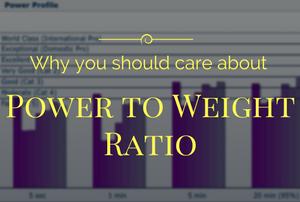
As a cyclist finishes their base training, it's important to evaluate how strong your aerobic base truly is. By using a metric called “aerobic decoupling” you can quickly and easily determine if your base work was effective and if you're ready to progress into harder high-intensity interval training. But before you can evaluate your aerobic fitness, you need to learn what aerobic decoupling is and how to use it effectively.
What is aerobic decoupling and why do we care about it?
If you're training with power, aerobic decoupling is a key measurement to evaluate as you perform base training. Aerobic decoupling is a numerical measurement of aerobic efficiency and endurance. It's representative of your body's ability to process oxygen and produce energy (as detailed in Biohacking Energy Systems) and is a marker of overall aerobic fitness.
Before you can appreciate the value of aerobic decoupling, here's a refresher about how your body produces aerobic energy and the concept of heart rate drift.
To produce energy, your body takes in oxygen through the lungs and passes it to working muscles via the blood stream. Oxygen and a fuel (fat, protein or sugars) are processed in the mitochondria to create Adenosine Triphosphate (ATP). ATP is the actual energy molecule that allows your muscles to contract and create pedaling force. Constant demands on the aerobic energy system can create a phenomenon known as heart rate drift.
Click through the jump to read the show notes for episode 78 of the Tailwind Coaching Podcast:
Podcast: Play in new window | Download (Duration: 46:53 — 33.6MB)
Subscribe:

Watts per kilogram is an important measurement in determining your cycling potential. On the surface, it's a simple measurement, but it can give a ton of information about your performance and strengths. But what exactly can you learn about your cycling by looking at your W/Kg measurements? In this article you'll learn what W/Kg is, how to use it effectively to plan and execute your training and a couple ways to improve your power to weight ratio.
What is “watts per kilogram” and why does it matter?
Watts per kilogram, often abbreviated W/Kg is a measure of power to weight. It takes the amount of power you produce at various time periods and divides it by how heavy you are. Sounds pretty simple, right? In theory, it is. But like everything in your cycling training, there's more to it than just a number. Click through to learn a little bit more and figure out why W/Kg is so important.
Continue reading “Why Do Watts Per Kilogram Matter?”

Indoor cycling training has been changed forever since the introduction of Zwift. For those of you who are unaware, Zwift is an online platform for “virtual” riding and training. It is set in a variety of places, from the London and Richmond UCI World Championships courses to an island in the south pacific known as “Watopia.” Wherever you end up riding, you'll be thrown together with thousands of other cyclists from around the world. It only takes a few cheap pieces of technology to interface with the program. Once connected, each cyclist can pedal on their own or join friends from around the world in a virtual training environment.
Nobody has to worry about bad weather, traffic, flat tires (hopefully!) or wearing the right clothing. Everything is accomplished from your own trainer in your own home.
But what is it that makes Zwift such an efficient indoor cycling training tool? How can you use it to improve your fitness more than you ever imagined? I'll guide you through a ton of different ways to use Zwift. I'll give you a bunch of ways to add variety to your workouts and get the most out of your free riding time.
Click through the jump and start learning how to build the best fitness possible with Zwift:
Continue reading “The Ultimate Guide to Indoor Cycling Training With Zwift”

The virtual training paradise known as Zwift Island (also called “Watopia”) has recently gotten a little bit bigger. On Monday, January 23rd, the Zwift island volcano expansion dropped. An entirely new route has become available, offering yet another training ground option for riders to conquer.
After riding the route several times, I've got a few tips to help you get the most fitness possible out of the volcano loop.
I'll start out by saying that I'm a huge proponent of using a smart trainer (like the Elite Drivo or Wahoo Kickr) with Zwift. One of the biggest complaints of riding a trainer is that it doesn't feel like riding outside. A smart trainer goes a long way towards mimicking the feel of outdoor training. By utilizing Zwift with a smart trainer, it also mimics real world conditions. This means even a “flat” road isn't really flat. Slight variations in gradient can change the type of training significantly. This is where a smart trainer shines, and you can read more detailed posts about training on Zwift with a smart trainer here.
That being said, click through the break to find out what kind of training I recommend on the new volcano expansion.
Continue reading “The Best Training For The Zwift Island Volcano Expansion”

Zwift has revolutionized the way we train indoors with a trainer. The emergence of smart trainers has turned Zwift into an immersive virtual riding experience. Muscular endurance (ME) is one of the basic fundamental skills that create a well-rounded cyclist, but it can be boring to accomplish on a trainer. Combining the two together provides you the opportunity to get tons of high-quality training and keep things from getting stale. But before you can go about building a ton of muscular endurance and making your body bulletproof, you have to understand what the goal of a ME interval is.
So, first of all, what is muscular endurance and why is it important?
Muscular endurance is your body's ability to resist muscular fatigue under pedaling tension. That pedaling tension is where the magic happens in your pedal stroke. The more tension in the pedals, the more power gets to the rear wheel and the faster you go. I'm sure you've experienced a time when you have to really dig in and push hard to catch your riding buddy. After a short time, your legs start to get heavy and tired and you have to rest. The more times you have to repeat this kind of move, the harder it becomes because your legs are just tired out. Maybe your legs cramp up or maybe you just can't make the move. No matter what the outcome, you just need more ME training in your program.
In this article I'm going to give you tips to improve your muscular endurance training with Zwift. Click through the jump to find out how:
Continue reading “Muscular Endurance Cycling Training With Zwift”




